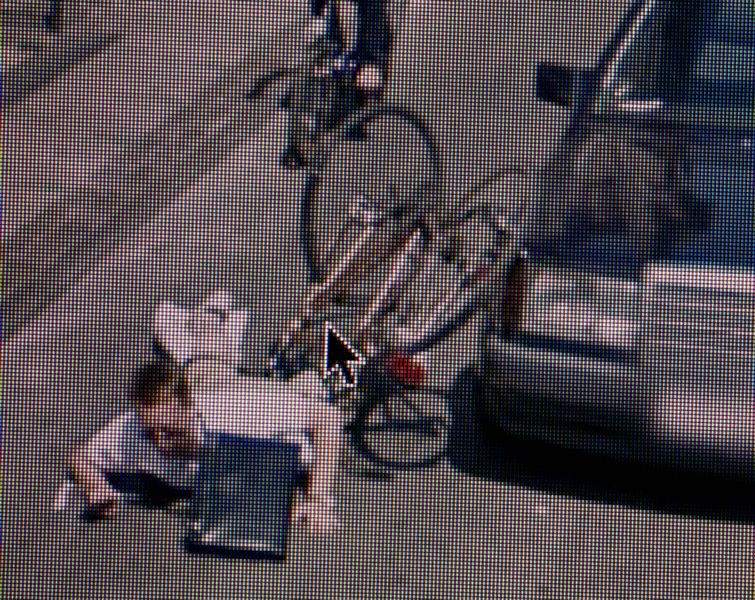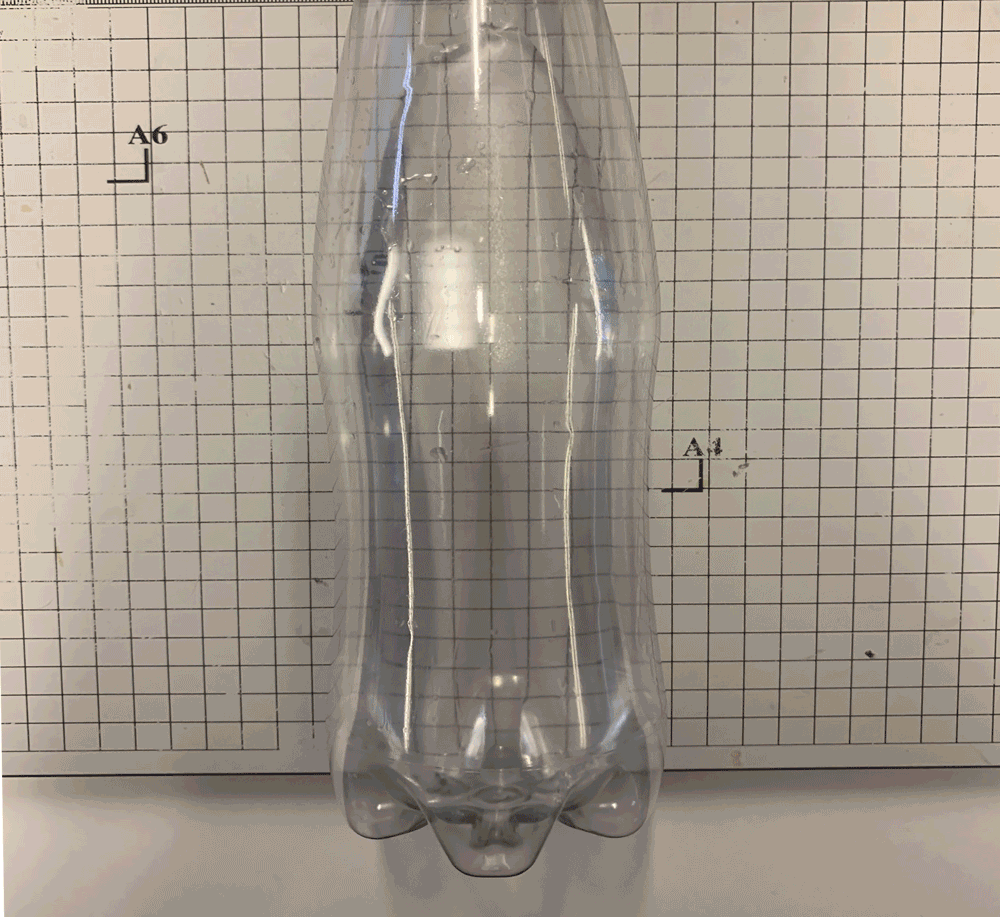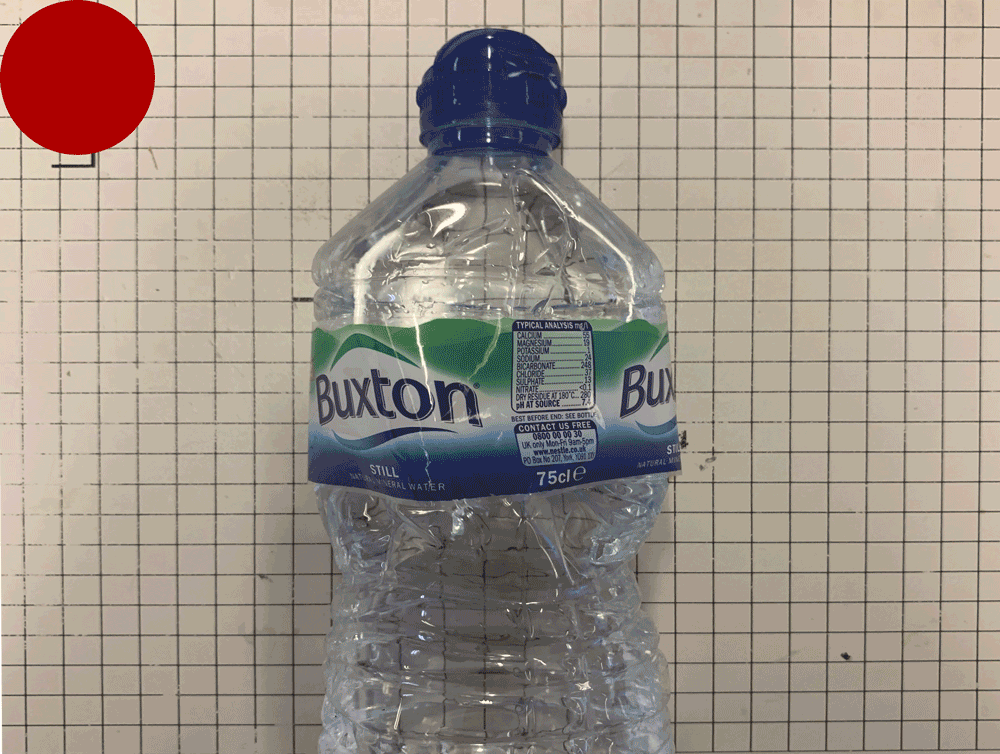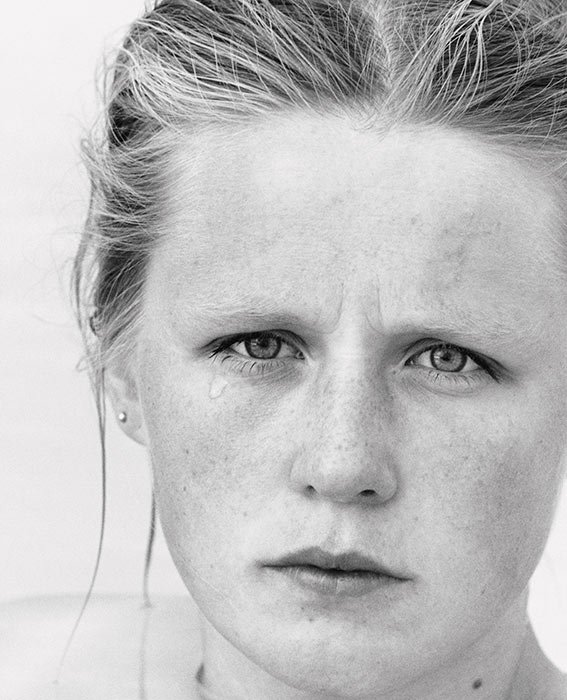“I photograph this woman, Margrét, in the water. This optic matrix was very important, as water is a true key phenomenon in Iceland. It was a quite easy relation. I did not say anything about what she had to do. She simply got into the water and I began to take photographs. In sunlight or under a stormy, cloudy sky – the water surrounded her, was on her and her hair was sometimes wet and sometimes tousled by the wind (…) You do not look at this woman in the traditional manner of nude photography. You look at this woman, who is also looking at you (…) Through her relation to the weather, the light or the wind, she takes on these different personalities.”
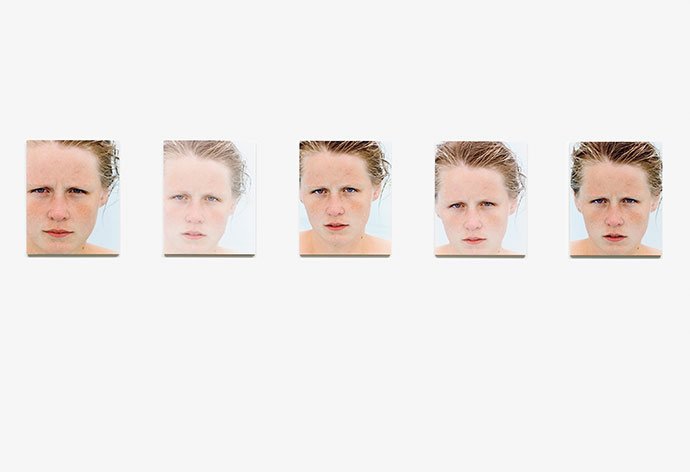
Horn’s photographic series ‘ You are the Weather’ show a young woman emerging from a geothermal pool in Iceland. Each photo taken milliseconds apart show minute and subtle differences in character almost indistinguishable from image to image.
The series beautifully demonstrate that due to small differences in circumstance and weather, we are not the same from moment to moment, mutated by environments and by others.
Since the late 1970s, Roni Horn has produced drawings, photography, sculpture and installations, as well as works involving words and writing. Horn’s work, which has an emotional and psychological dimension, can be seen as an engagement with post-Minimalist forms as containers for affective perception. She talks about her work being ‘moody’ and ‘site-dependent’. Her attention to the specific qualities of certain materials spans all mediums, from the textured pigment drawings, to the use solid gold or cast glass, and rubber. Nature and humankind, the weather, literature and poetry are central to her art.
‘Big enough to get lost on. Small enough to find yourself. That’s how to use the island. I come here to place myself in the world. Iceland is a verb and its action is to center.’-Roni Horn on Iceland
Image Analysis
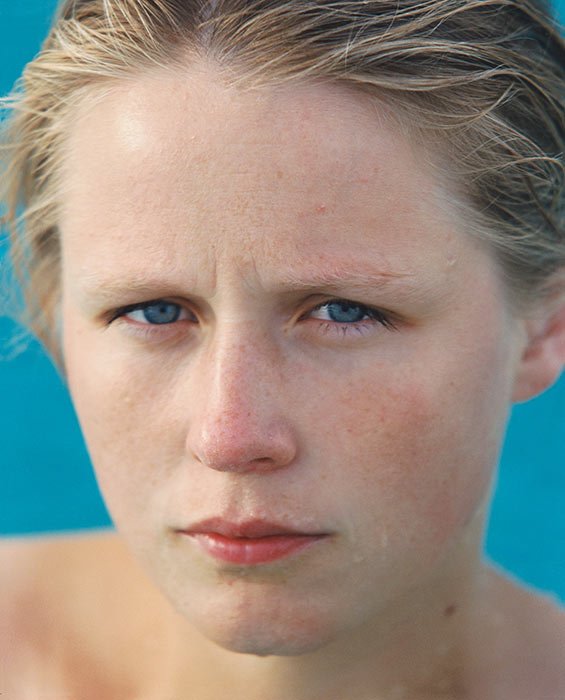
‘These photographs were taken in July and August of 1994. For a six-week period I traveled with Margrét throughout Iceland. Using the naturally heated waters that are commonplace there, we went from pool to pool.’
Horn uses the natural lighting of Iceland to light up the model.
The image appears saturated as the red colour in the woman’s face stands out, however this may just be due to the cold weather of Iceland. The images also feels cold due to the blue background and the blue undertones in the skin.
The images are Close-Up as they are focusing on the differences in the woman’s expressions. A Shallow Depth Of Field is gained by using a larger aperture. Amongst the series, the composition changes to have the woman facing slightly to the right, or in this case, to the left. The use of negative space around her, presenting what is around her, helps to emphasize how her expressions change with the weather.
The series reflects aspects of Minimalism, which Roni is apart of. The series puts a big focus on the relationship between all images rather than as individual images. By offering many perspectives, Horn opens the possibility for infinite mutability and denies the viewer the satisfaction of “knowing” a subject through film.

